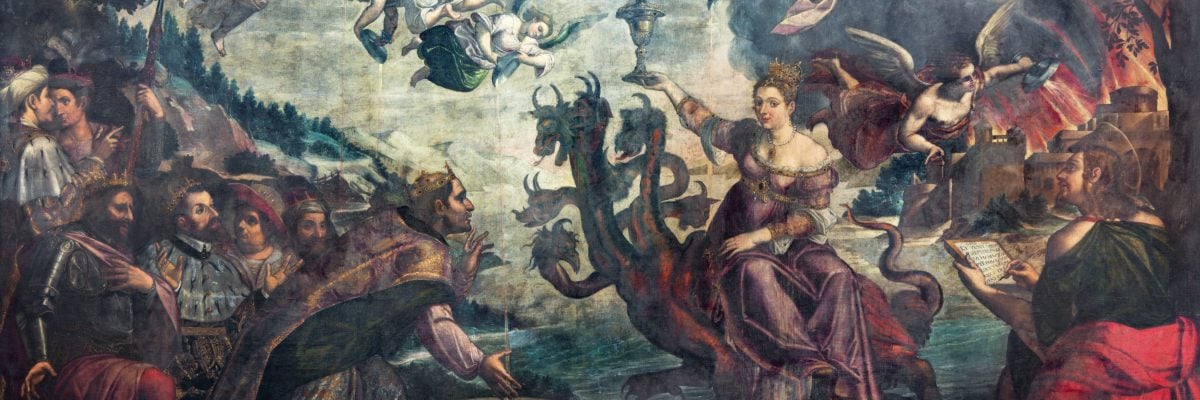
DAY 190
CHALLENGE
“The Catholic Church is the whore of Babylon.”
DEFENSE
The whore of Babylon is described in detail in Revelation 16:19–19:4.
Babylon was a city in ancient Mesopotamia (modern Iraq), but scholars recognize the use of “Babylon” in Revelation as a symbolic designa- tion of another city (cf. 11:8; also cf. 1 Peter 5:13, where Peter, who is known to have been in Rome, refers to being in “Babylon”):
- The whore is depicted persecuting Christians (cf. 17:6, 14).
- She is seated on a beast with seven heads, which are identified as seven hills (17:9) and seven kings (17:10).
- The beast also has ten horns, which hate the whore, attack her, and burn her with fire (17:16).
- The whore is said to be “the great city which has dominion over the kings of the earth” (17:18).Most scholars see these as pointing to the ancient, pagan city of Rome, which persecuted Christians, which was built on seven hills, which had a line of emperors plausibly identified with the beast (see Day 203), and which was the capitol of the major empire of the day.
Some scholars have seen the clues as pointing to another city—Jerusalem—which also persecuted Christians in the first century, whose authorities were allied with and supported by the Roman empire (and thus “seated” on the beast), and which was attacked and burned by an alliance of Roman and other troops in A.D. 70, as Jesus predicted (Mark 13). Further, Revelation 11:8 speaks of “the great city” where the “Lord was crucified,” the Old Testament speaks of Jerusalem as a whore (Isa. 1:21; Ezek. 16:1, 15–35), and the whore is the antithesis of the bride of Christ, the “New Jerusalem” (Rev. 21:2–22:5), suggesting the old Jerusalem.
Both identifications are possible, but neither fits the Catholic Church. Indeed, according to the standard anti-Catholic theory, the Catholic Church did not exist in the first century and thus could not persecute the apostles, as the whore did (Rev. 18:20).
More fundamentally, Revelation was meant to be understood by the original audience as describing what would happen soon (Rev. 1:1). The audience would have no way of understanding the whore as a fu- ture Church rather than one of the persecuting cities of their own day.



